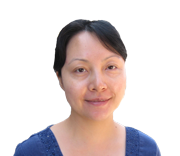Immune therapy should be a more targeted and efficacious way of treating cancer than chemotherapy, but not all patients respond as well as doctors expect. Researchers don’t really know why immunotherapy is successful in some patients and not in others, or which other type of treatment might be better for some people.
Now a biomedical engineer at the University of Texas at Austin Cockrell School of Engineering hopes to profile the human immune system, in order to find better ways of helping the immune system beat cancer. Ning (Jenny) Jiang was recruited in 2012 to the department of biomedical engineering from Stanford University with the help of a First-Time Tenure-Track Award from CPRIT.
Read More
Immune therapy should be a more targeted and efficacious way of treating cancer than chemotherapy, but not all patients respond as well as doctors expect. Researchers don’t really know why immunotherapy is successful in some patients and not in others, or which other type of treatment might be better for some people.
Now a biomedical engineer at the University of Texas at Austin Cockrell School of Engineering hopes to profile the human immune system, in order to find better ways of helping the immune system beat cancer. Ning (Jenny) Jiang was recruited in 2012 to the department of biomedical engineering from Stanford University with the help of a First-Time Tenure-Track Award from CPRIT.
Jiang studies T cells, the part of the immune system programmed to fight or kill a threat. T cells use a protein called a T-cell receptor to recognize and bind to antigens, such as viruses, bacteria, or cancer cells. How well these T-cell receptors bind to the antigens determines how effective the T cells are at eliminating the threat.
She developed a method of high-throughput screening to see how well T-cell receptors on individual T cells bind to different antigens. Previously, it would have taken months, if not years, to complete a single screen. Jiang can now isolate T cells, find out how well they bind to antigens, and sequence the T-cell receptor genes—all in a process that is 1000 times faster, completing 50-60 T cells in a single day.
Jiang hopes that being able to better characterize the immune system will allow for better treatment choices for patients. Her immune-system screen could also help diagnose people suffering from other diseases or find out how well an individual responds to a vaccine. Also, she hopes that knowing the sequences of key T-cell receptors will enable genetic engineering of T cells specifically designed to kill cancer cells.
She also discovered through her research in healthy blood donors that young people are more likely to have strong pathogen-binding T cells, compared to older people. “This suggests that as people age, they may start showing defects in their immune systems, especially in their T cell repertoire,” she says, which may explain why elderly people are more vulnerable to infections and respond less well to vaccines.
Her high-throughput screening technique could be useful for evaluating the health of an individual, as well as for adoptive immunotherapy—a nascent field in which physicians rev up a patient’s immune system to target specific antigens that are mutated in cancer. In some immunotherapy techniques, synthetic T cell receptor genes are added to T cells and then transferred back into a patient. Others extract anticancer T cells and amplify their numbers in a laboratory, before re-infusing them into a patient. But in each case, the antigen-binding affinity of the receptor needs to be well understood. The tools that Jiang has developed will drastically reduce the time it takes to look for these cancer-killing T cells.
Jiang has published several high-impact papers as a result of her research, applied for five patents, and received a highly competitive CAREER Award from the National Science Foundation. In addition, she was awarded the prestigious Damon Runyon-Rachleff Innovation Award from the Damon Runyon Cancer Research Foundation.
“The CPRIT recruitment grant is really fantastic, because it invests in scientists, not projects, which is very different from all of the other mainstream funding mechanisms,” Jiang says. “It gives us lots of freedom, and allows us to develop creative new methods and technologies.”
Jiang received her Ph.D. in biomedical engineering from Georgia Institute of Technology and was a postdoctoral fellow at Stanford.
Read Less

